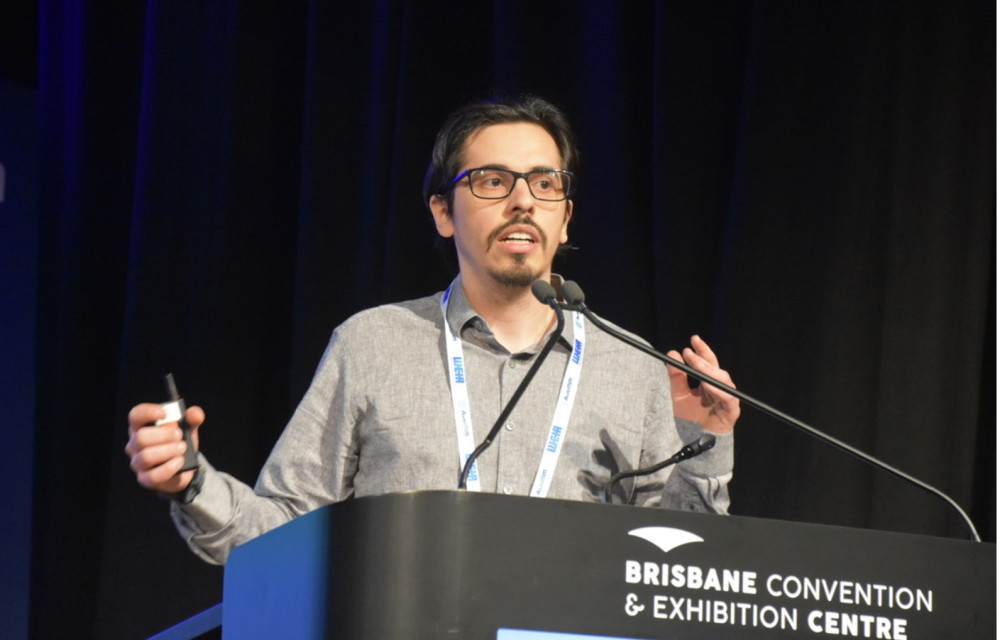Waves in the pit could spell trouble - advanced modelling shows how hidden seiche hazards threaten tailings safety and why early action matters


, , , , , , , , , , ,
,
Seiche waves might be rare in mining, but new research shows they could pack enough force to overtop in-pit tailings storage facilities with serious consequences for operations, infrastructure, and safety.
At the AusIMM Life of Mine | Mine Waste and Tailings Conference in Brisbane, Adolfo de Resende, water resources engineer at WSP, presented his research titled Advanced Seiche Hazard Modeling for In-Pit Tailings Storage Facilities Using FLOW-3D.
Co-authored with Nigel Moon and Helvecio Duarte, the presentation demonstrated how computational fluid dynamics (CFD) can reveal hazards that are often underestimated or overlooked by traditional tailings dam assessments.
Adolfo explained that seiche events are standing waves generated in enclosed or semi-enclosed water bodies, often triggered by earthquakes, landslides, or sudden mass movements. In natural settings, they’ve been recorded in lakes and fjords, but their potential in mining-related water bodies – particularly in-pit tailings storage facilities (IPTSFs) – is less widely recognised.
“In the context of in-pit facilities, seiche hazards are often overlooked due to the perception that the pit geometry itself provides a safeguard,” he said. “But our case study demonstrates that credible risks can exist, especially during early operational phases when the facility hasn’t yet reached a stabilised state.”
The study assessed 18 potential pit wall failure scenarios, selected based on factors such as factor of safety, location of the potential failure, and the volume of material involved. Each scenario was modelled in FLOW-3D, simulating the generation, propagation, and run-up of waves – and, crucially, whether they could overtop the crest.
To capture the range of possible behaviours, the modelling examined two extreme tailings states: one where the tailings behaved like a solid mass, and another where they behaved entirely as a liquid. This approach allowed Adolfo and his colleagues to explore the outer bounds of wave formation and overtopping risk.
The results were eye-opening. “In scenarios where the tailings were assumed to behave as a liquid, we observed maximum wave heights reaching up to 18.5 metres,” Adolfo said. “In some cases, these waves had enough energy to overtop the pit crest – which poses a real threat to nearby infrastructure and the environment.”
The team didn’t just stop at numerical modelling. They also compared FLOW-3D results with empirical calculations, using Ebers et al. (2019) as the reference method. “Both approaches delivered results in the same order of magnitude, which is encouraging for cross-checking,” Adolfo explained. “However, the numerical simulations provide a much richer understanding – they can account for complex topography, fluid interactions, and other physical factors that empirical formulas simply can’t replicate.”
This level of detail matters, he emphasised, because it directly influences the quality of emergency planning and the robustness of design decisions. “Empirical methods are fast and useful for initial screening,” he said, “but when you’re dealing with extreme scenarios and potential overtopping, you want the precision and realism that CFD can deliver.”
Beyond the technical outputs, the research carries a strong operational message: seiche hazard assessments should be a standard component of IPTSF risk management, not an afterthought. Advanced modelling can inform structural design, operational procedures, and contingency planning – giving operators a much clearer picture of how their facility might respond under extreme conditions.
“The more accurately you can predict wave behaviour, the better prepared you are to mitigate the consequences,” Adolfo said. “In the event of a failure, that preparation could make all the difference in safeguarding people, infrastructure, and the environment.”
The takeaway for mining professionals is clear: when it comes to in-pit tailings storage, the still surface can be deceiving. Beneath it lies the potential for sudden, powerful movement – and the best defence is understanding the physics before nature decides to test it.
Picture: Adolfo de Resende presenting his seiche hazard modelling research at the Life of Mine | Mine Waste and Tailings Conference 2025 in Brisbane. Photo: Jamie Wade.
